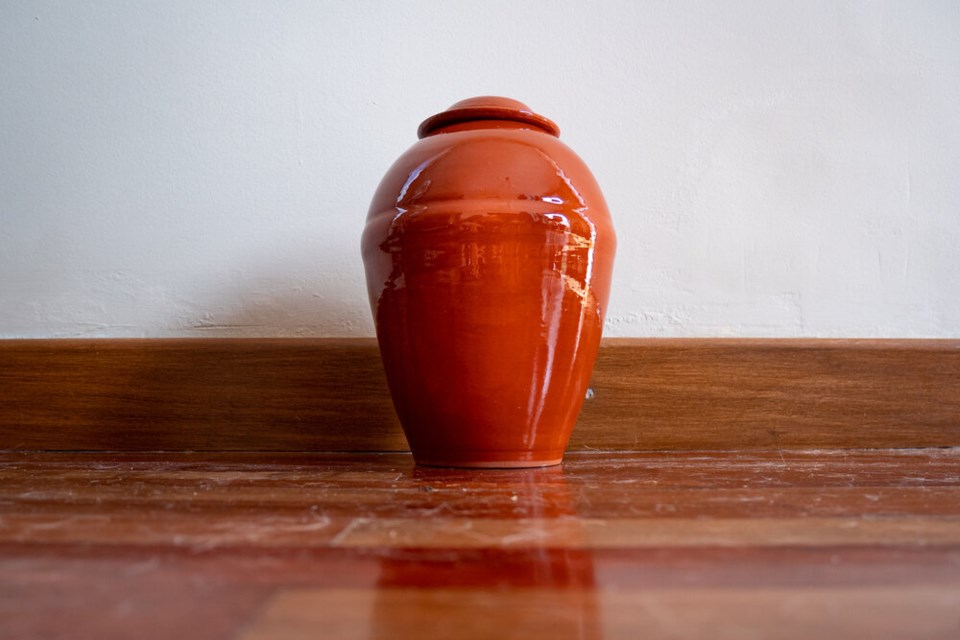Why is a Vancouver funeral home sending bodies to the United States to get cremated?
That’s the question one Metro Vancouver man asked after the box containing the ashes of his recently deceased mother came back after making a trip to Blaine, Washington.
“It was just a big red flag,” said the man, who asked not to be named to avoid traumatizing his family.
In an email to Glacier Media, the head of the Vancouver-registered company, Amherst Funeral & Cremation Services Inc., said the practice allows it to offer a “faster, cheaper” service.
Scott McFarlane said his operation has always been transparent about cremating in Blaine, where it owns a stake in the crematorium, and therefore has greater control over its operating standards.
McFarlane said Amherst places detailed disclosures in three places throughout client paperwork, and anyone can choose to have a cremation occur at a sa���ʴ�ý facility instead.
The company, said McFarlane, has been looking to cremate locally for the past 14 years, but public perception framing any crematorium as a “big pollution demon” has made it hard to establish a new facility in sa���ʴ�ý He said he has also tried to build relationships with existing local crematoriums.
“However, in the end, the fact that we’re direct competitors has always found a way to drive a wedge into any well-intentioned relations we started with any of them,” he said.
Glacier Media reached out to several crematoria on the Alberta and Washington sides of the sa���ʴ�ý border. Except for the Blaine crematorium, funeral directors at each facility said they rarely cremate the remains of British Columbians.
When it does happen, it’s usually because a family member wants the burial to happen in the United States or because it’s an individual being repatriated after their death, they said.
Some places in the world, like South and Southeast Asia, carry out cremation as a vital component of religious and cultural observation. In many cases, the dead are reduced to ash by burning vast quantities of wood.
Cremating a human body in sa���ʴ�ý involves high-powered, usually natural gas burners. The gas alone produces emissions equivalent of burning roughly two tanks of gasoline.
As the leading jurisdiction in sa���ʴ�ý for cremation, nearly 90 per cent of sa���ʴ�ý’s dead (more than 35,000 people) are laid to rest by flame every year, according to data obtained from the Cremation Association of North America.
Altogether, experts estimate roughly 10 million kilograms of carbon are sent into sa���ʴ�ý’s atmosphere every year as a result of turning human bodies to ash.
That’s a relatively small source of emissions compared to transportation or buildings in sa���ʴ�ý At the same time, it’s not an insignificant source — cremations are thought to have produced more greenhouse gasses than the province’s entire fleet of propane and natural gas vehicles in 2019.
When asked whether cremating in Washington was the company’s way of avoiding sa���ʴ�ý’s carbon tax, McFarlane described the claim as “absolutely false.”
“This is one of many lies often used by our competitors to take a cheap shot at our well-established operations,” he said.
According to a spokesperson for the sa���ʴ�ý Ministry of Environment and Climate Change Strategy, crematoria in sa���ʴ�ý are subject to the province's carbon tax. But the levy only applies to fuel purchased or used in sa���ʴ�ý
Cremations that occur outside of the province — such as Washington State — are subject to the taxes within that jurisdiction, confirmed the spokesperson.
“The carbon tax is a robust policy tool to reduce (greenhouse gas) emissions across sectors including in the end-of-life industry,” he wrote in an email.
Applying a carbon tax to cremation has caused outrage for some families in other jurisdictions. In Alberta, a family spoke up to unit after they learned a crematorium had charged them 10 times the appropriate amount under the province's carbon tax.
But for Emily Bootle, co-founder of KORU Grassroots Deathcare in Vancouver and vice-president for the , a carbon tax is only a start.
“The response we get is that the carbon tax looks after the emissions from cremation and just none of the narrative of ‘the foot off the gas or keeping things out of the air,’” said Bootle. “It's just... ‘that will take care of it for your industry, so don't worry about it.’”
Bootle is part of a growing movement in sa���ʴ�ý aiming to green the end-of-life industry.
But reducing the carbon footprint of cremation and environmental footprint of modern burial — where vast sums of concrete, steel and other materials are buried forever — is going to require a change to provincial legislation.
For more on how some British Columbians are looking to decarbonize death, read .


